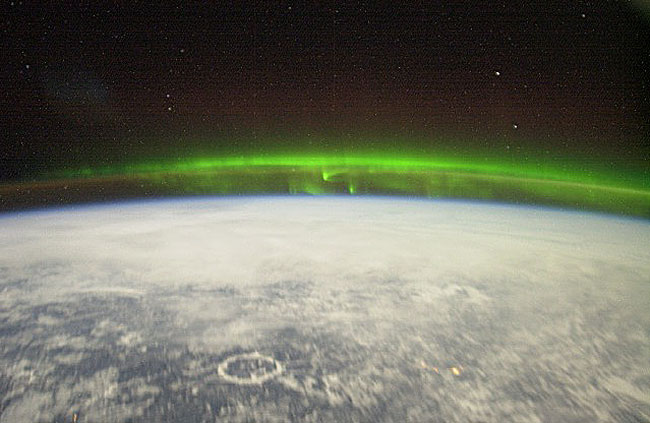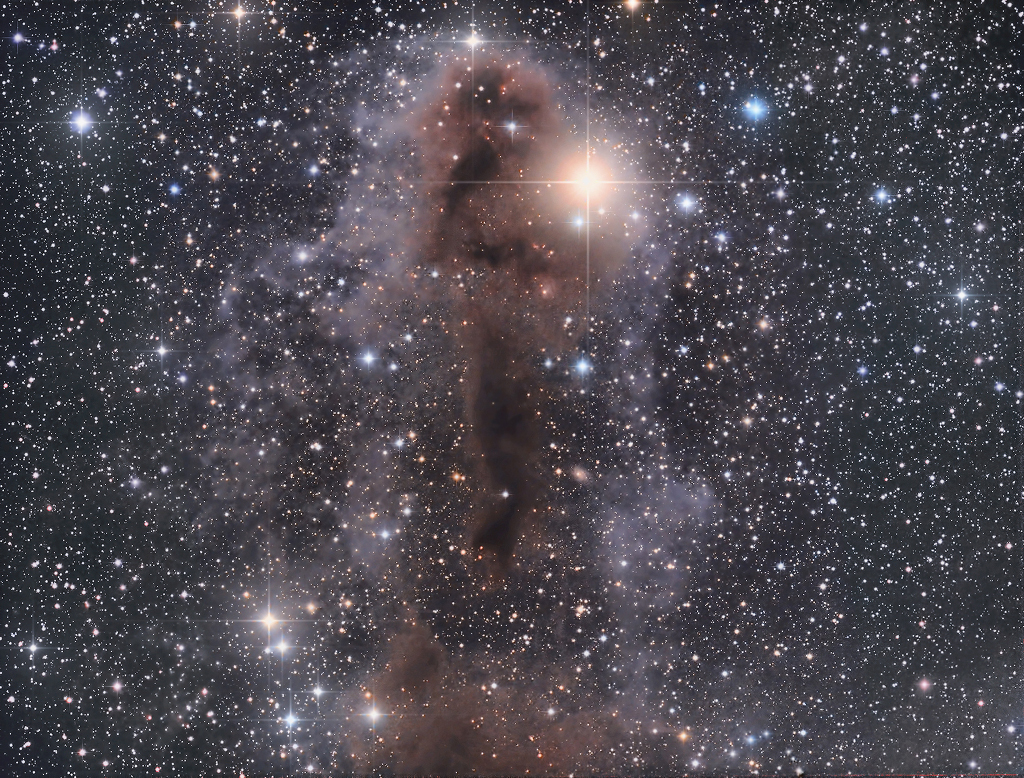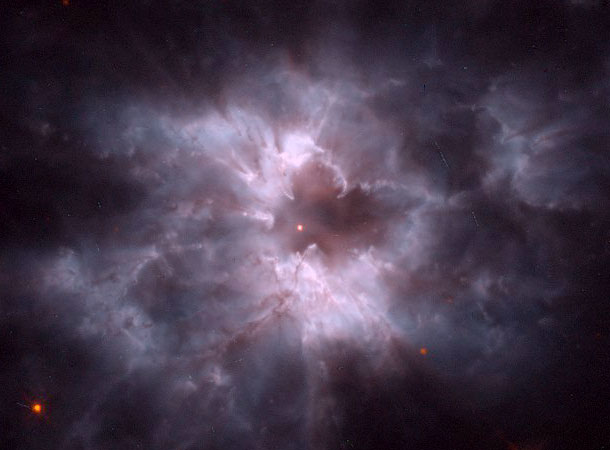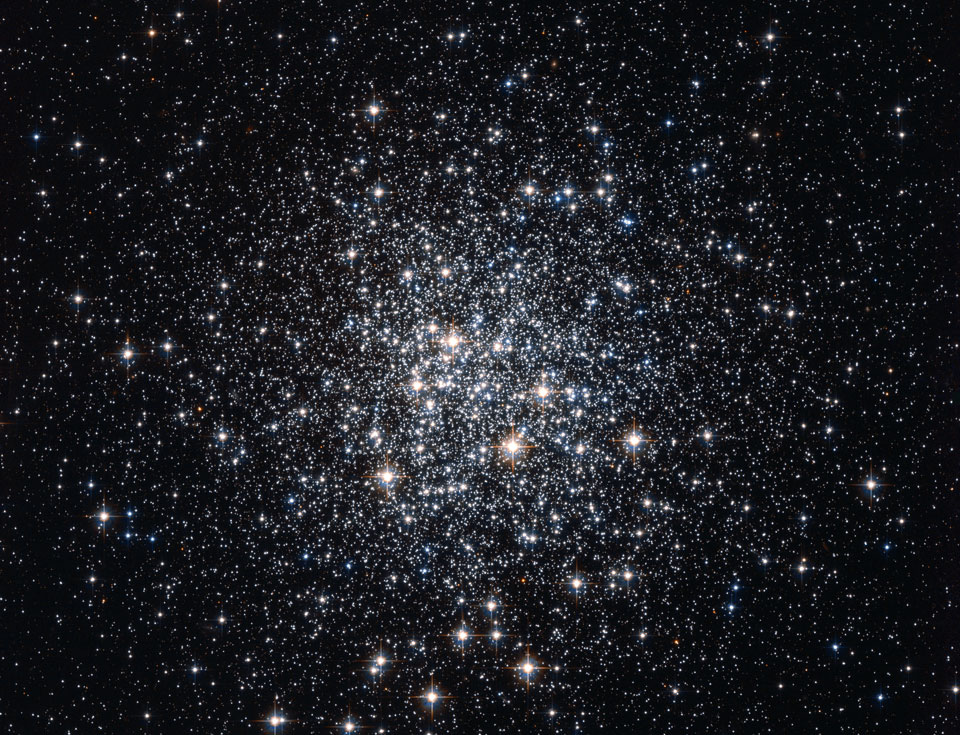Welcome to NASA Explorer
Get the latest images, videos, and data from NASA's vast collection using our interactive tools.
Get the latest images, videos, and data from NASA's vast collection using our interactive tools.
Explore the universe through NASA's eye-catching images. Filter by category:
2003-04-08

What do auroras look like from space? From the ground, auroras dance high above clouds, frequently causing spectacular displays. The International Space Station (ISS) orbits just at the same height as many auroras, though. Therefore, sometimes it flies over them, but also sometimes it flies right through. The auroral electron and proton streams are too thin to be a danger to the ISS, just as clouds pose little danger to airplanes. ISS Science Officer Don Pettit captured a green aurora, pictured above in a digitally sharpened image. From orbit, Dr. Pettit reports, changing auroras can appear to crawl around like giant green amoebas. Far below, on planet Earth, the Manicouagan Impact Crater can be seen in northern Canada. Have you seen today's: Space Station Science Picture of the Day?
2019-05-31

Stars are forming in Lynds Dark Nebula (LDN) 1251. About 1,000 light-years away and drifting above the plane of our Milky Way galaxy, the dusty molecular cloud is part of a complex of dark nebulae mapped toward the Cepheus flare region. Across the spectrum, astronomical explorations of the obscuring interstellar clouds reveal energetic shocks and outflows associated with newborn stars, including the telltale reddish glow from scattered Herbig-Haro objects seen in this sharp image. Distant background galaxies also lurk on the scene, visually buried behind the dusty expanse. The deep telescopic field of view imaged with broadband filters spans about two full moons on the sky, or 17 light-years at the estimated distance of LDN 1251.
2000-07-30

Like a butterfly, a white dwarf star begins its life by casting off a cocoon that enclosed its former self. In this analogy, however, the Sun would be a caterpillar and the ejected shell of gas would become the prettiest of all! The above cocoon, the planetary nebula designated NGC 2440, contains one of the hottest white dwarf stars known. The white dwarf can be seen as the bright dot near the photo's center. Our Sun will eventually become a "white dwarf butterfly", but not for another 5 billion years. The above false color image and was post-processed by Forrest Hamilton.
2012-08-19

Globular clusters once ruled the Milky Way. Back in the old days, back when our Galaxy first formed, perhaps thousands of globular clusters roamed our Galaxy. Today, there are less than 200 left. Many globular clusters were destroyed over the eons by repeated fateful encounters with each other or the Galactic center. Surviving relics are older than any Earth fossil, older than any other structures in our Galaxy, and limit the universe itself in raw age. There are few, if any, young globular clusters in our Milky Way Galaxy because conditions are not ripe for more to form. Pictured above by the Hubble Space Telescope are about 100,000 of M72's stars. M72, which spans about 50 light years and lies about 50,000 light years away, can be seen with a small telescope toward the constellation of the Water Bearer (Aquarius). Beautiful Images: Facebook Sky
2025-06-18

What's that unusual spot on the Moon? It's the International Space Station. Using precise timing, the Earth-orbiting space platform was photographed in front of a partially lit gibbous Moon in 2019. The featured image was taken from Palo Alto, California, USA with an exposure time of only 1/667 of a second. In contrast, the duration of the transit of the ISS across the entire Moon was about half a second. A close inspection of this unusually crisp ISS silhouette will reveal the outlines of numerous solar panels and trusses. The bright crater Tycho is visible on the lower left, as well as comparatively rough, light colored terrain known as highlands and relatively smooth, dark colored areas known as maria. Downloadable apps can tell you when the International Space Station will be visible from your area. APOD Turns 30!: Free Public Lecture in Cork, Ireland on June 24
NASA Explorer is a platform designed to bring the latest discoveries from space to your fingertips. Whether you're an astronomy enthusiast, a student, or a professional, we provide you with tools and resources to explore the cosmos.